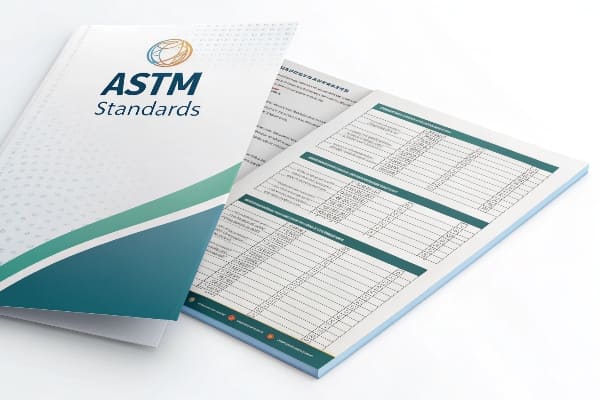ASTM stands for the American Society for Testing and Materials1. It is an international standards organization that develops and publishes voluntary consensus standards for a wide range of materials, products, systems, and services. ASTM standards are critical in various industries, including manufacturing, engineering, and construction, as they ensure the quality, safety, and reliability of materials and products.
ASTM sets standards for materials, including rubber, to ensure their quality, durability, and performance in specific applications.

ASTM standards2 are recognized worldwide and provide a framework for testing, quality control, and material selection, benefiting both manufacturers and consumers by ensuring that products meet specific performance and safety criteria.
What Is the ASTM for Silicone Rubber?
Silicone rubber is a versatile elastomer known for its resistance to extreme temperatures and excellent electrical insulation properties. ASTM standards for silicone rubber are crucial to ensuring that the material meets the necessary performance benchmarks for various applications, including automotive, medical, and electrical.
The ASTM standard for silicone rubber is ASTM D2000. It defines the material's physical properties, including hardness, tensile strength, and resistance to temperature and chemicals.
Silicone rubber must meet specific ASTM standards to be considered suitable for demanding environments. ASTM D2000 provides detailed guidelines on testing methods and performance criteria for silicone rubber, ensuring that the rubber can withstand various environmental conditions and remain reliable over time.
Key ASTM Standard for Silicone Rubber: ASTM D20003
ASTM D2000 outlines the specifications for elastomeric materials, including silicone rubber. This standard classifies silicone rubber based on:
- Hardness: Measured in durometer scale (Shore A).
- Tensile strength: The rubber's ability to withstand tension without breaking.
- Elongation: The extent to which silicone rubber can stretch without failure.
- Temperature range: The ability of the rubber to function effectively under high or low temperatures.
What Are the 6 Types of ASTM Standards?
ASTM standards cover a broad range of industries and materials. The six main types of ASTM standards include:
- Test Methods (ASTM E-01): These standards provide procedures for conducting tests on materials to measure their physical, chemical, and mechanical properties.
- Specifications (ASTM F-01): Specifications provide detailed descriptions of the material or product's required characteristics, ensuring quality and consistency.
- Guides (ASTM G-01): Guides offer recommendations and best practices for material selection, handling, and performance evaluation.
- Classifications (ASTM D-01): Classifications divide materials into categories based on shared properties, helping manufacturers select the right material for specific applications.
- Practices (ASTM D-10): These standards outline procedures and best practices for operating or managing processes involving specific materials.
- Terminology (ASTM F-13): Terminology standards define terms and concepts commonly used in materials science and engineering.
These types help categorize ASTM standards based on their application, making it easier for manufacturers to understand and implement the right practices.
Overview of ASTM Types
| ASTM Type | Description | Example |
|---|---|---|
| Test Methods | Procedures for testing material properties | ASTM D2000 test methods |
| Specifications | Describes required characteristics for materials | ASTM D2000 for silicone |
| Guides | Recommendations for best practices | ASTM F243 for quality |
| Classifications | Categorizes materials based on shared properties | ASTM D2000 elastomer types |
| Practices | Best practices for material handling or processes | ASTM D380 for rubber hoses |
| Terminology | Defines key terms and concepts in materials science | ASTM E10 for terminology |
Are ASTM Standards Free?
No, ASTM standards are typically not free. While some general information may be available to the public, full access to the detailed specifications and testing guidelines requires a purchase. ASTM standards can be bought directly from the ASTM website or through various distributors.
ASTM standards are typically available for purchase, and full access requires a subscription or a one-time fee.
However, some organizations and universities provide access to these standards as part of their resources, and some standards may be available through government publications or industry associations.
Conclusion
ASTM standards are critical for ensuring the performance and reliability of materials, including various types of rubber like silicone, neoprene, nitrile, and EPDM. These standards guide manufacturers in creating products that meet specific requirements for safety, durability, and functionality. While access to these standards is generally not free, they are essential tools for manufacturers worldwide.
-
Discover the significance of the American Society for Testing and Materials in setting industry standards that ensure product safety and quality. ↩
-
Learn about ASTM standards and their importance in various industries for maintaining quality and safety in materials and products. ↩
-
Explore this link to understand the ASTM D2000 standard, which is crucial for ensuring the quality and performance of various rubber materials. ↩






